MercoPress. South Atlantic News Agency
Tag: Central Bank of Chile
-
Tuesday, September 8th 2020 - 09:50 UTC
Chile post trade surplus in August but exports fell 10.8% and imports 22.4%

Chile posted a trade surplus of US$ 904 million in August, the central bank said on Monday, with a drop in levels versus a year earlier of both exports and imports for the month.
-
Thursday, August 13th 2020 - 06:57 UTC
Chilean central bank allowed to buy treasury bonds, as “a tool of exceptional use”
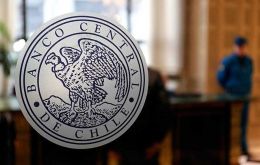
Chile’s Congress has approved a law to allow the central bank to buy bonds issued by the country’s treasury in the secondary market, potentially giving the bank added firepower to help offset fallout from the COVID-19 crisis.
-
Friday, November 15th 2019 - 09:50 UTC
New record high for the US dollar in Chilean markets: 820 Pesos
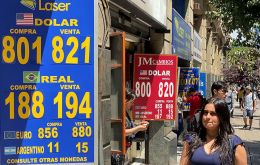
Chile's central bank announced a US$ 4 billion injection to stop a currency slide that saw the peso reach historic lows on successive days this week. The peso fell to 820 to the dollar at the close Thursday, breaking the 800 Pesos milestone.
-
Wednesday, November 13th 2019 - 09:49 UTC
Protests continue in Chile as economy faces “grave consequences” and Peso plunges to a historic low

Chile’s finance minister warned on Tuesday of the “grave consequences” for the nation’s economy of three weeks of often violent unrest after the peso slid 4% to hit a historic low against the dollar. Ignacio Briones said the weakening of the peso was a “sign of worry” that he and his colleagues were watching very carefully.
-
Thursday, September 5th 2019 - 09:35 UTC
Chile's central bank slashes benchmark interest rate to 2% to prop economy
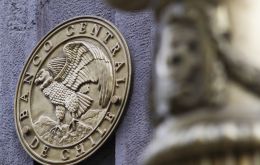
Chile’s central bank slashed the benchmark interest rate by 50 basis points to 2% on Tuesday, the lowest in 9 years, citing a sputtering economy hurt by global trade tensions.
-
Saturday, August 23rd 2014 - 06:46 UTC
Chilean Peso depreciation expected to continue in coming months

The US dollar climbed to 584 Chilean Pesos at the end of trading in the Santiago money market, signaling a slow but steady increase for several months now and with prospects of continuing according to analysts. A greenback at 600 Pesos is not far away according to market analysts.
-
Wednesday, August 20th 2014 - 09:43 UTC
Chile's economy cooling faster than expected: weakest pace since 2009
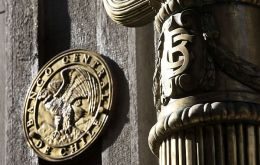
Chile's GDP grew at its weakest pace since 2009 in the second quarter as investment waned and a previously rapid expansion in consumer spending slowed, central bank data showed. The economy grew 1.9% in the second quarter compared with a year ago, or a seasonally adjusted 0.2% compared with the first quarter.
-
Thursday, August 9th 2012 - 06:38 UTC
Chilean inflation flat in July; accumulates 2.5% in the last 12 months
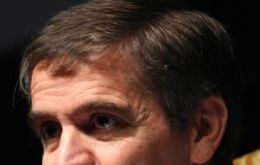
The Chilean consumer price index showed no variation in July in contrast to the surprise 0.3% drop in June, as increases in food and non-alcoholic drinks offset falls in clothing, footwear and utilities, according to the national statistics agency INE.
-
Saturday, June 9th 2012 - 02:46 UTC
Chile’s May inflation on target but government fears external risks
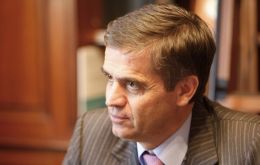
Chile's consumer price index remained unchanged in May, the government statistics agency INE said on Friday, slowing its pace from April as lower food and transport prices offset higher electricity costs. Prices rose 0.1% in April, the INE said last month.
-
Monday, December 12th 2011 - 04:40 UTC
Chile names Harvard-educated economist as new Central bank president
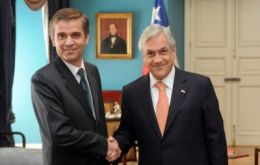
Chile named this week member of the board and Harvard-educated Rodrigo Vergara Montes as the new President of the Central bank replacing outgoing Jose De Gregorio. President Sebastian Piñera still has to name the fifth member of the board.
